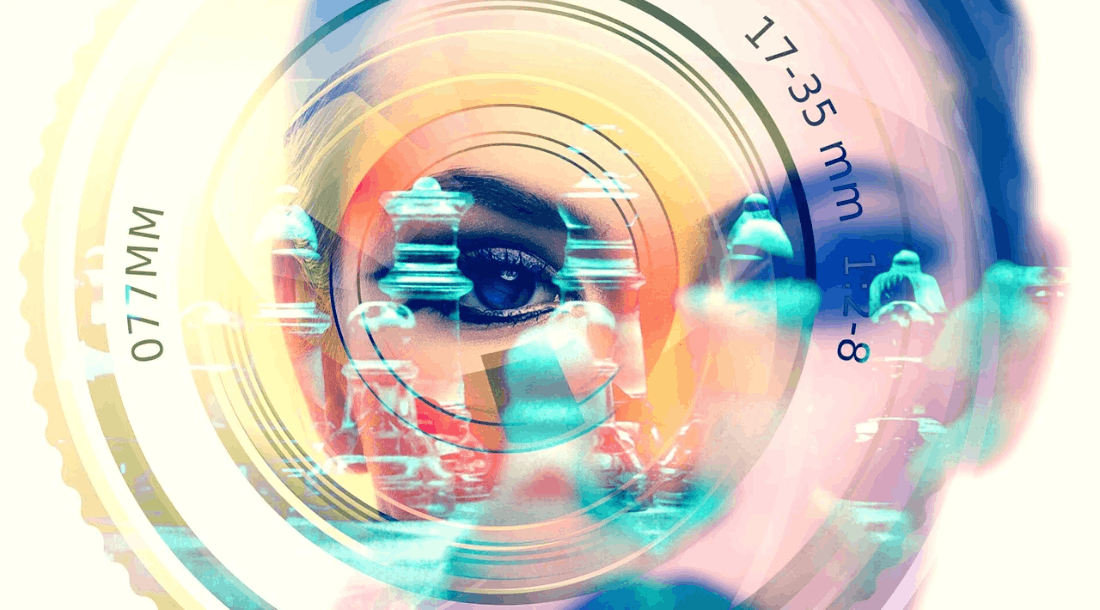Complexity Management – Model, Levels, FORMs

Preliminary remarks:
Models that can also be read hierarchically come with the seemingly small, but in the long run big problem, that to a large extent they are also only understood that way.
That is why I waited a long time to publish this article. I wanted to make sure that I had provided sufficient concepts beforehand to help to grasp it in the way Ralf and I would like the model to be understood:
- meant as functional and not ontological integrative
- multi-perspectivical
- as complex re-entry-FORMs
This model for complexity management is a proposal for perspective building: let us create a guiding difference complexity management and give suggestions to organize/sort under it, to generate complex re-entry FORMS and to observe (more).
The series of articles "Forward, march!" (at this time only available in German, 3 articles) in this blog demonstrates what complexity management looks like at complexity level 3 or higher. I use the example of the perspective "worldview and ideology" to demonstrate how this perspective can be constructed not only in a differentiated way, but also higher dimensioned.
Three illustrative pictures from "Forward, march!":

ondimensional
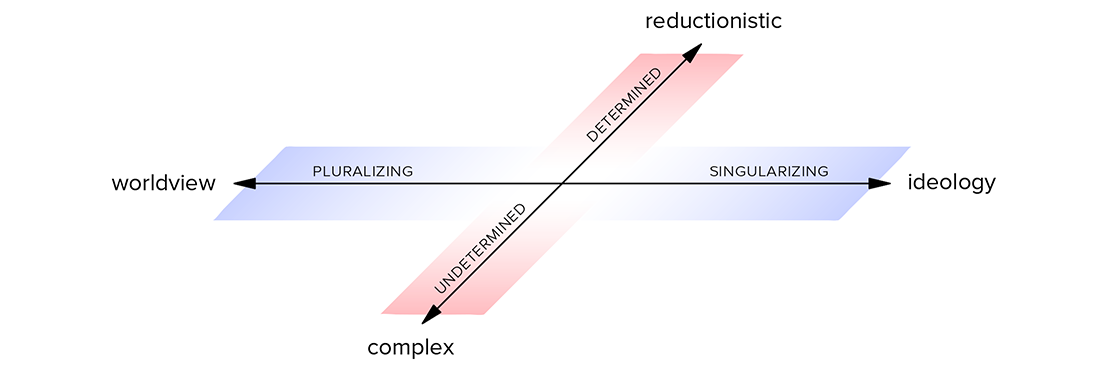
twodimensional
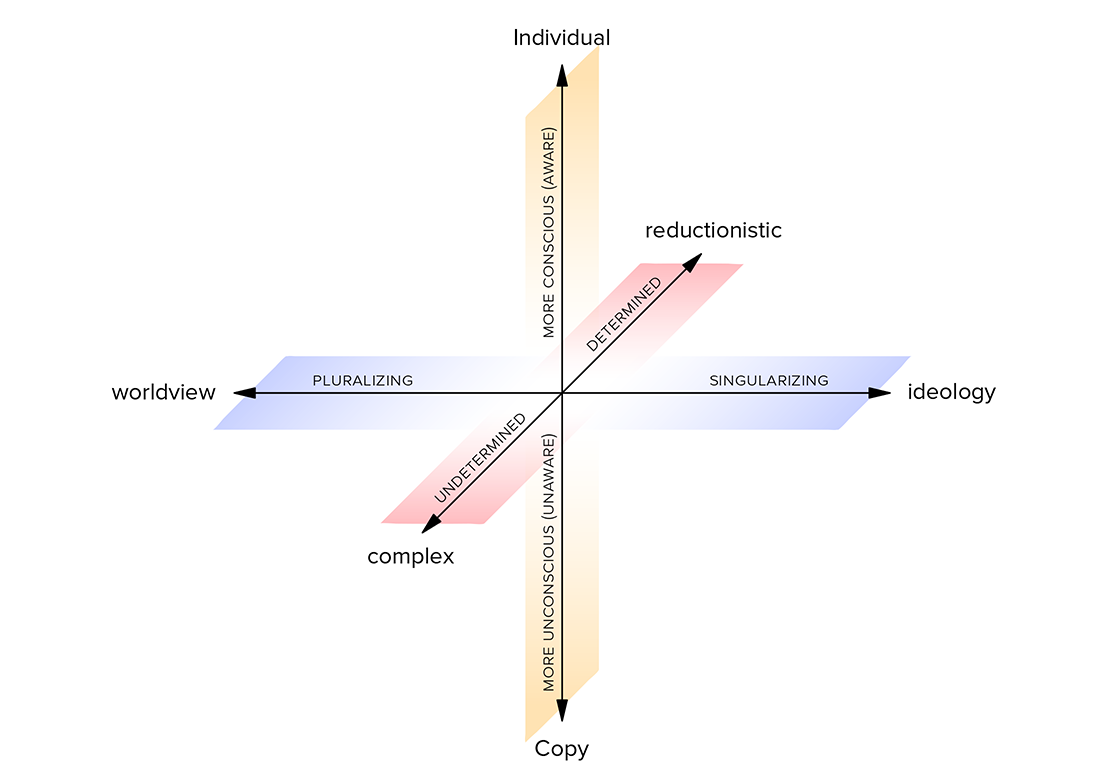
threedimensional
To differentiate means to distinguish more precisely, to form more differences.
To dimension, to put on completely different angles, to take other perspectives on the matter.
uFORM iFORM, reflecting in complex re-entry FORMS, helps to learn emergent thinking from SelFis, to watch how emergence forms and to grasp more deeply that and how different FORMs exdifferentiate differently in different contexts. SelFis also inspire us to creatively create different dimensions as we analyze them. What we learn from SelFis in a simple way can also be applied in more difficult situations with more overwhelming systems.
Understanding emergence helps to produce functional analyses in reality emulation that are adequate for our time. Grasping emergence supports us in thinking multidimensionally. Emergence challenges us to leave our reality tunnel, because it makes us aware that our old concepts are not sufficient.
Our FORMWELT, from which I have already presented some concepts here and in my SystemTalks, provides the coding language for language(s) and meaning with which we (re)learn to think multicausally, to consider and integrate contingency of meaning and to grasp dimensional contexts of others. A free-floating language that does not try to establish itself ontically provides us with the chance to freely shape/form ourselves and each other and to immerse ourselves in the sign universes of others. In this way, we automatically dimension and differentiate higher and deeper.
No one should feel inferior if, after reading this article, s/he finds him/herself on complexity management level (in short complexity level) 0 or 1. This model is not intended to create status differences between people, but to help people look at their own world construction habits and generally learn what can be done to think in a more differentiated, more dimensional and fast-paced way.
C2M (ComplexityManagementModel(ing)) can also help us to actively and consciously strengthen the evolutionary power within us for active and conscious (self/umwelt) change. We take responsibility for our cognitive development and use C2M to adjust it functionally.
I always ask to keep in mind that the model levels have to be passed through one after the other and have to be deeply integrated. No one can jump from level 1 to level 3 without FORMing experiences on/with model level 2. In the first years of life, most children are good at higher dimensioning and partly also differentiating, systemic and logical thinking is in our blood. But then the human world happens to us and - despite all the learning - unfortunately there are also regressions.
I cannot wish my way up to level 3. I first have to learn to dimension higher.
Whether I have learned this can be checked.
Since our educational systems are not yet designed to encourage children to continue not only to differentiate highly but also to dimension highly and to jump between dimensions at a rapid pace, we are now faced with the great task of training ourselves for the emergence into which we are sucked with reality emulation and to deal with crises at scales for which we are not yet sufficiently trained. Children can think, play, act on complexity level 2, but confronted with more rigorous differentiation in bulky conditioning environments and educational systems, and with adults who suspiciously try to control creative self-development, and dealing with other children who have already accomplished the socially extorted adaptation performance and are now themselves, as small adults, trying to condition the more multiple set-up children into their tighter expectation structures, complexity management on level 2 is lost again - for many forever.
Our complexity management model can work orientationally and make it easier to look relaxed at what we can learn next.
Even though the levels build on each other, which might give the impression that it is always "better" to have progressed to a "higher" level, I can think of situations where it may not necessarily work to ones advantage if he/her has succeeded in this way - however great the achievements may feel.
I will jump ahead briefly to clarify the context before going into the technical:
On complexity level 3, for example, thinking slows down because more has to be integrated and the effort required to keep the dimensions visible and separate and sufficiently stable increases. Thorough, deliberate/slow complexity level 3 thinkers tend to be popular, but when it comes to making quick decisions, they are not necessarily the ones to help us here.
Complexity level 4, on the other hand, shows up fast-paced, but when someone FORMs like this, their high dimensioning and differentiation ability, just coupled with the speed at which they can present their models, may severely overwhelm others. Thus, higher levels of complexity management can trigger new conflicts, which we can best prepare ourselves for by focusing our attention on integrating the levels below rather than developing higher ones. The better the integration, the easier it will be for us to cope with higher levels.
In this respect, in some situations we may prefer to have a C1, someone at complexity level 1, by our side rather than someone at a higher complexity level.
Team leaders win when they can functionally assess and bring together the members of their teams. Complexity managementFORMers 4 will not feel comfortable in most teams and feel that everything is going much too slowly. They often work better alone, or in loose associations. So far I have not seen any team of C4s working together the way C0s or C1s do. They automatically work in competence hierarchies and usually do not like it when you mess with their competence.
Let us take into account that someone on C1 can actually follow someone on C4 only if C4 shows up on C1. To C1, everyone else sounds like C1, C0 or crazy or brilliant but incomprehensible. C2s and C4s may wonder why the others just can not follow, it is all so clear. If this happens, the abilities of the levels below have not (yet) been sufficiently integrated.
We cannot grasp what we have not really worked out. Communication is only possible among (sufficiently) equals. Integrative thinking can create such equality. It works especially well if we manage to motivate ourselves and others not only to demand eye level from those who are ahead of us, but also to take a stool or a ladder every now and then so that it is not always the other person who has to stoop down. In this way, people at a lower level of complexity can help people at a higher level in an integrating manner. We understand such (mutually) cooperative behaviour as complexity FORMs if we remember that we do not only have to read FORMs from left to right, but may and can also read them from right to left or from top to bottom, .... Those who realize that they are stuck at C0 or C1 can make important contributions to the dialogue by explaining their perspective of their world, to others at higher C2M levels and asking not only for understanding (teacher function) but also for help (learner function).
We may calmly assume that we can always teach each other something and that we all depend on each other. There is no shame in lower differentiated and dimensioned complexity management, unless someone absolutely wants to look at the phenomenon in that way and stay their position. From my point of view, we can also find a wisdom therein which can increase integrative performance. However, we should not fall asleep in the cause of this. There is no right to stupidity, at least in my universe. Those who are able to FORM the underlying C2M levels well, become more socially flexible and dimensioned.
Only then, when the older C2M levels have been well developed and integrated, can C3 go back to fast-paced C1 or C4 find the calm and patience to slowly and thoroughly unpack everything for his listeners, so that they can also follow him/her well.
Stress can demonstrate to us decisively/dramatically how well we can integrate/differentiate low/high complexity:
Stress reveals how stable our achievements are. A C3 who tends to revert to C1 under high stress should not be discouraged by this, but simply recognize that he has acquired great skills in less stressful times, which still need more attention, patience and care to be able to take hold in (existentially) threatening situations.
Experience and patience play an important role here. It makes a big difference whether someone automatically falls back on C1 or whether he can consciously decide to do so when she realizes that he/she cannot get any further in his/her acute situation with C2 or C3.
It is important to me that this is thought through. I do not like to see this - I think - pretty helpful little model being misused to sort into "bigger, stronger, better" categories without taking into account that we live in societies that tend to make C0 decisions under globalization pressure, and then prefer, press and live C0 communications especially in social media.
This is not without consequences for all of us ... so let us learn to think, experience, act in a more integrated and complexity-conscious and stress-aware way.
In such a way we can ensure that we do not add C2M as a further status-increasing stress factor, that we do not transform it into di-stress (unhealthy, energy-sapping stress), instead of supporting each other in using C2M with interest and joy in learning, in order to swim along in the wonderful flow of eu-stress (healthy, motivating, energizing stress).
On complexity, I would like to note that I understand it to be observer-dependent. Something can look very simple to a C1, very complicated to a C3 or vice versa. A C4 can find a matter highly complex and add many dimensions to it, while the same thing is crystal clear to a C1 - conversely, a C4 might find a thing crystal clear and move around in it with ease, while a C1 finds it looks highly complex and also very complicated.
Our ability to differentiate/dimension plays a role here, as does what we are already good at and at what we are not.
C0ers and C1ers will be more inclined to contour world ontically than to do functional analysis, as functional analysis requires not only deeper understanding of systems, but also the ability to look at systemics not only from within one's own filter bubble. Knowledge of systems theory does not guarantee higher dimensionality skills. I know systemicists who can differentiate fantastically in their own subject and do great work. But as soon as they go into other subjects, they overestimate their systemics skills and try to tackle other topics with the knowledge from their home dimension: and fail without realizing it.
We are more likely to find multi-causal thinking at/in the higher complexity management levels than at/in the lower ones; attempts at ultimate reasoning will become fewer and fewer as we climb the C2M ladder.
So C0 and C1 types are also more likely to try to use this model here only as a step model and not as a FORM proposal. This is perfectly fine as long as you keep in mind that the sooner you switch it off, the sooner you learn to dimension higher. It is not about seeing yourself in comparison to others, but working on observing yourself in different life situations and thinking: "How deeply have I differentiated? How high did I dimension? How fast-paced was my complexity management?"
It can also be a lot of fun to observe ourselves throughout the day to see in which FORMs we think and how. For example, I am often a C1 in the morning, waking up with an idea that I really need to write down. Anyone who comes to me with further dimensions before my first cup of tea should be prepared for a little domestic conflict. Here is space for me to learn... If I tiredly come across an interesting typical C3 problem, it can happen that large parts of my idea go down the drain if I take on too much. Then I slow down, which does not really harmonize with the rest of my daily plans. If I am very tired and not quite there yet, and I am confronted with too many dimensions, I sometimes go C0 :). However, if something very challenging happens, I can instantly switch to fast-paced higher dimensioning and differentiation. In this respect, it seems to play a role for me in the morning how and with what the world challenges me. The luxury of not having to exert myself because nothing is existentially threatening at the moment turns me morning grouch into an dimensioning grouch who could certainly do otherwise if she had to.
Coaches and counselors who take up our C2M can consider how they can help people at the different stages in the different life situations to differentiate and dimension higher, to become more fast-paced, but at the same time, please, make absolutely sure that the integration of what they have learned underneath is always taken into account. Only this guarantees stable self-positioning in complex, demanding situations and environments.
Factors amongst others that have a favorable effect on higher levels of complexity are: Safety, a roof over one's head, good nutrition, exercise in the fresh air, meditation, making music, stress management training, constructive-cooperative work environments ...
In his book "Communicative Complexity Management" (German, Springer), Karim Fathi has compiled some models and tools that can support us hereby.
I understand a matter/system as complex when I cannot relate all its elements to all others at the same time.
In reality emulation complexity has made a leap, and the climate crisis as well as the multiply interconnected conflicts that integration societies have to process and manage challenge us once again.
The more people learn to manage complexity in a more highly differentiated and dimensioned way, the more crisis-resistant and conflict-capable the teams, groups and societies in which they become involved.
Conversely, the more dimensioned and differentiated teams, groups and societies deal with complex challenges, the more crisis- and conflict-resiliant their people are.
At the same time, we will see more often, especially in this time of change and adjustment to the coming/present emergence, that smaller teams and groups can work more highly dimensioned than their individual members, because each individual can bring different perspectives to the table, but may find it harder to differentiate. The more complex the communication becomes, the more likely that dimensioning and differentiation will decrease when fewer people are involved, heard, considered who have higher dimensioning and differentiation skills.
Thus, we see greatly reduced dimensioning and differentiation capabilities at work in the commicative giant waves that are instantly rolling through and across social media and media in a non-local way. We have not yet learned how to engage in such complexities cooperatively-constructively.
But this momentary defficiency need not discourage us, especially as all over the world people are beginning to discuss the issue of complexity and its consequences, and are trying in a multi-perspective and multi-causal way to bring us models that will help us engage in emergence more broadly, more heartily and more adequately.
Let me now turn to our ComplexityManagementModel (C2M) itself. I will keep it concise and support it with pictures that the good Peter Hofmann (thank you, Peter) made for all of us.
Complexity Level Model/Complexity FORM Model:
We distinguish a total of 6 levels:
Complexity management level 0 C0
Complexity management level 1 Cl1
Complexity management level 2 C2
Complexity management level 3 C3
Complexity management level 4 C4
Complexity management level 5 C5
C0:

For C0ers, the world is simple. They put on one dimension and do not differentiate much either.
They are the typical black-and-white thinkers.
For them, there is a simple solution for everything.
They tend to think ontically, to have simple (often extreme) ideologies.
Linear-causal thinking works wonderfully here.
They do decide quickly and decisively, but it is an automatic tempo that always switches between two possibilities.
We need C0 decisions when things become existentially threatening: Attack or run away? Flee from the thunderstorm under the tree or duck?
Under di-stress, C0ers are more prone than others to verbal or even physical violence, and to naive extreme ideologies.
Advice: Look more closely.
C1:
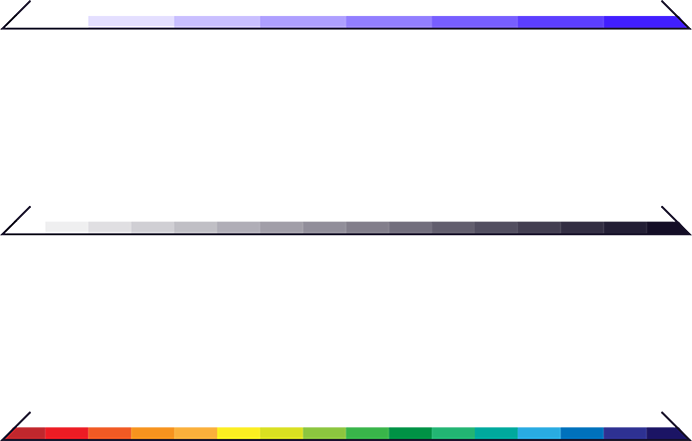
C1ers also apply only one dimension to their decisions, but they can differentiate very highly and also very colourfully.
They can follow scientific, technical, political, economic, ... behaviour well and deeply and participate competently and as bright as a flash, but always only in this one dimension they know.
C1ers can think multicausally if they have been trained in it.
They are capable of highly complex thinking in their dimension and can, for example, work out very differentiated political models or develop fantastic technologies as researchers.
Under di-stress, C1s revert to C0.
Advice: Put on a new dimension every day.
The majority of people rarely get beyond C0 or C1 in their daily lives.
C2:
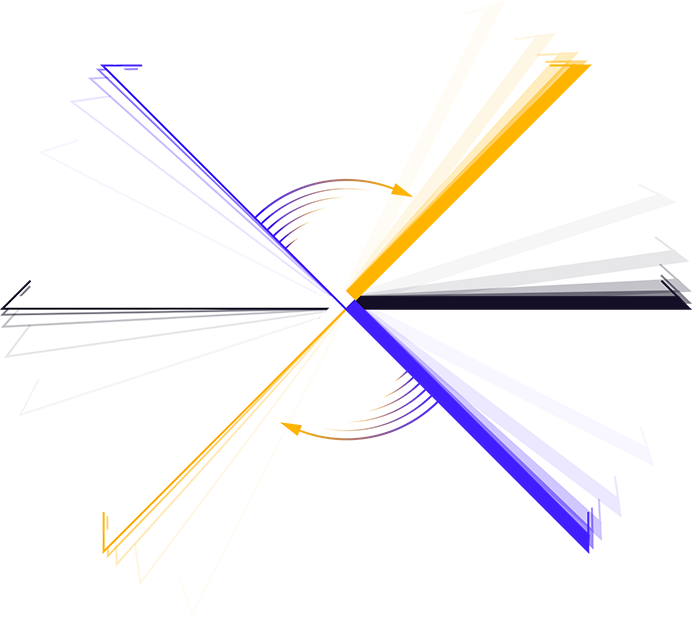
C2s dimension quickly and rapidly, but they first lose the ability to differentiate highly, which C1 elaborated and integrated.
They jump from one dimension to another, many seem to have new projects, visions and ideas every day. Often they do not even finish their latest projects because they immediately think of another one.
C2s can inspire teams or slow them down, depending on whether and how their visionary power can be used.
C2s can look insane and disturbing to C1s and C0s, and I have known many C2s who got into so much trouble with themselves that they sought psychotherapy or psychiatric treatment - often simply because they had lost/abandoned their social compatibility. Some C2ers, overwhelmed, also by social rejection, fall back into ontic thought patterns or a belief in their mission or the demand for absolutes. But beware! Do not C-zero! C2 is not the same as insane. C2ers can appear insane to themselves and others.
Life at complexity level 2 produces an ability that plays itself out as a conflict with oneself: C2ers can jump out of their dimension and construct a completely new/different perspective. The C2er has not (yet) learned to use this ability consciously and interactively. Learning to use C2 consciously can become the test that determines whether the system has to fall back into older/lower complexity management FORMs or can develop new/higher complexity management FORMs. C2 splits complexity management. The question is: can it reorganize emergently at new/higher levels?
C2ers can form big visions, motivate strongly in the short term, but implementation is not their strong point.
Under di-stress, some C2ers fall back to C0 or become rigid on a dimension they desperately want to see enforced.
Advice: Slow down.
Only in transition from C2 to C3 can models like the one I have used so far in the
s y s t e m z e i t blog, be fully exploited in terms of content.
C0s feel completely overwhelmed by them or immediately consider them unnecessary,
C1ers cannot cope with multidimensionality, become insecure and will tend not to deal with it rather than leave the safety of their dimension tunnel.
C2s try to read over the density of meaning and prefer to play around with dimensions.
The articles in this blog are therefore particularly good for reading them repeatedly in order to learn from them slowly, and not to try to escape the density of meaning through trigger reactions, and to manage to slowly unravel the knots in the mind that may clot during your experiment of higher dimensioning. SelFis and mindFORMs visually support and motivate functional analysis in multidimensional spaces - for example, to read and apply different communication FORMs as roles in teams and to learn to think and (re)act systemically.
C3:
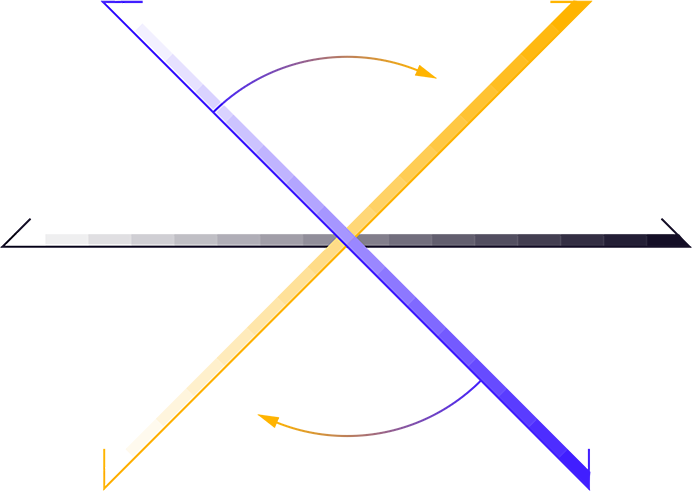
With C3, calm comes into the situation. The C3er has learned on C2 to dimension higher, now he starts to expand his dimensions as well.
That costs speed.
C3ers are the typical patient, slow thinkers whom most of us like to trust intensively because C3s - unlike C2s - are good listeners.
They know that everything has several sides and can follow the perspectives of others well because they have already learned to apply them to their own thoughts as dimensions for observing the world.
They now take more time for the different dimensions, which they still have to do, otherwise they will lose them from memory and end up back at C1.
Under di-stress, C3ers tend to become C1ers.
In teams, C3s stabilize, bring calm into the system, have a relaxing effect on C2s and mediate between them and C1s, C0s, C4s.
Advice: Let your guard down once in a while and trust your impulses.
C4:
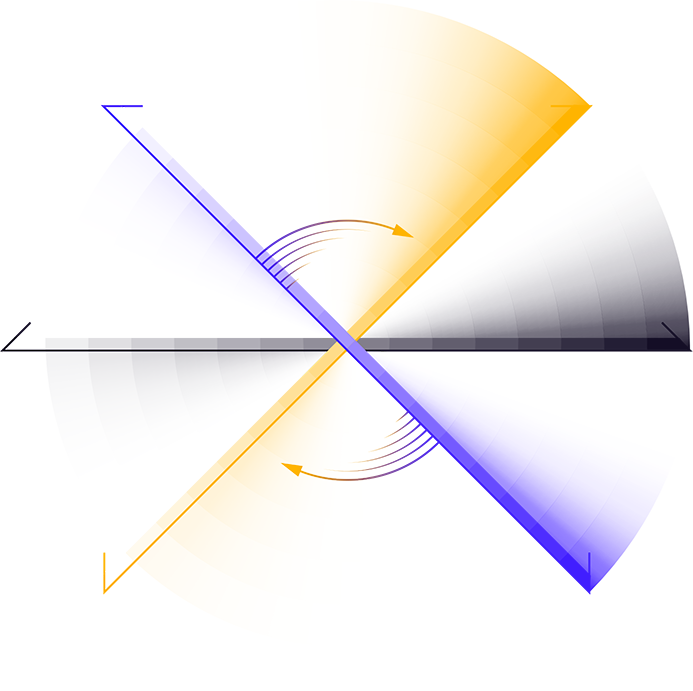
With C4, the C3er learns to trust her/his differentiation and dimensioning abilities and no longer has to memorize everything because (s)he knows that (s)he manages to create several dimensions to his/her problems, tasks, thoughts, challenges in a flash and to differentiate them accordingly in a snappy manner.
C4ers impress not only with high dimensioning and differentiation, but also with fast speed. In no time at all, they are able to look at issues from different perspectives and illuminate every angle.
Under di-stress, C4s tend to C2- or C3-FORMs.
In teams, C4s only work well if their competencies meet with a response that they can take seriously. They can tend to be impatient with all but C3s and C5s.
Advice: Integrate from below for deeper understanding.
C5:
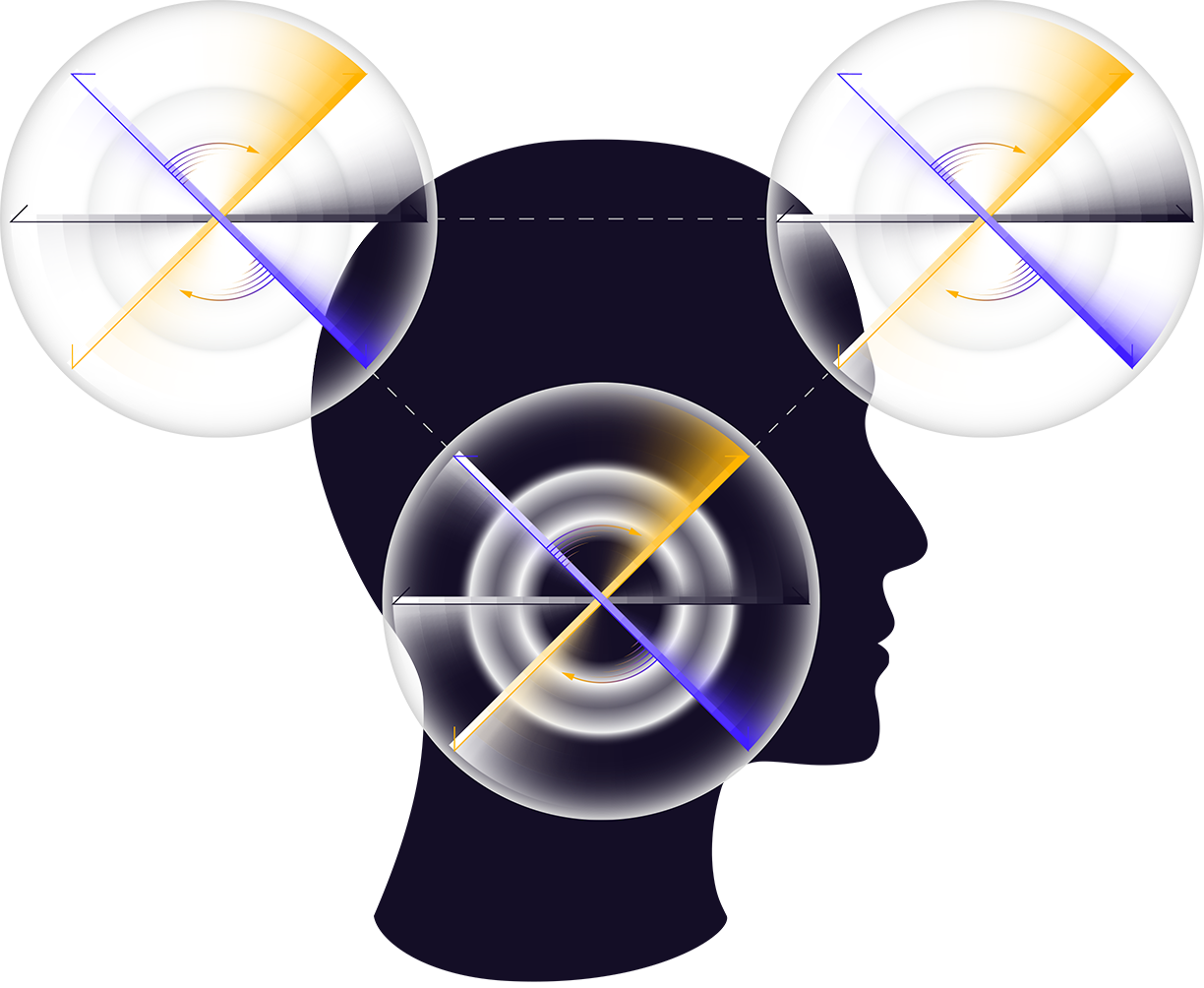
C5ers dedicate themselves to deeper integration of the levels below and work on developing their abilities to speak, act and think in a way that is appropriate to the situation and (sufficiently) transparent to the people with whom they want to cooperate.
If C4 can balance and play a ball in a multidimensional, highly differentiated and fast-paced way, C5 can do it with several/many.
C5 can simultaneously process C0, C1, C2, C3 and C4 and juggle different perspectives, for example a multidimensional and differentiated one on "worldview", an acute one on "crises", a comparative one on "modern technologies and mindsets" and ... , and adapt situationally.
These are skills that C3 has already acquired in parts by learning to respect and integrate others' world models, C4 can lose the humane perspective a little, however C5 will unfold it again for the benefit of all - self-critically and sometimes even considerately.
C5ers can literally spin up whole FORMiverses out of nothing - consistent, coherent, functional, empirical, connectable. They do not have to think about it for long, but can trust their differentiation and dimensioning skills. Speed is not their problem. They can become completely still mentally one moment and play at all levels of complexity the next, keeping their C4 balls in the air while dealing with others who cannot.
C5ers are the ideal leaders - if they want to be ...
Let us now look at all the complexity management levels/complexity management FORMs in a table:
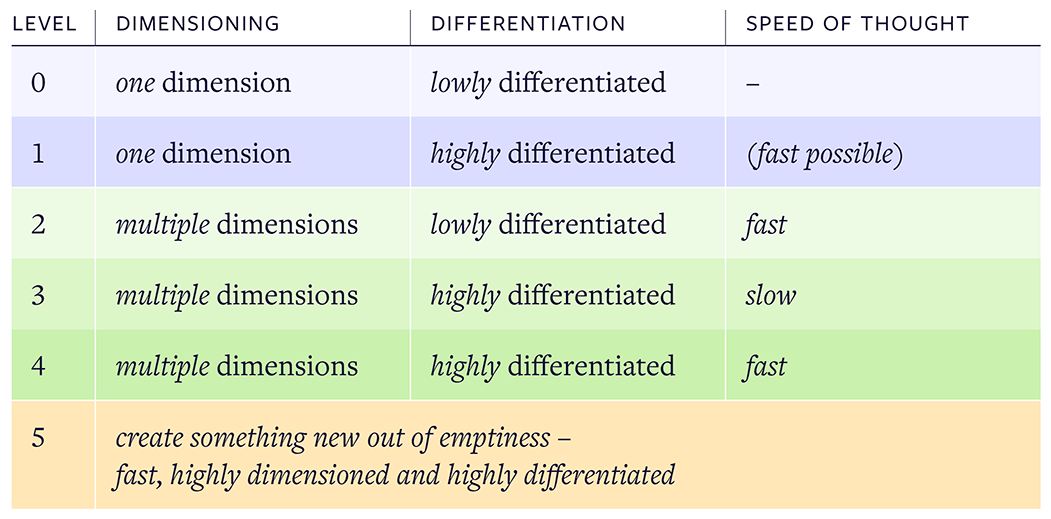
Viewed from below, the complexity FORMs look like levels we have to reach step after step:
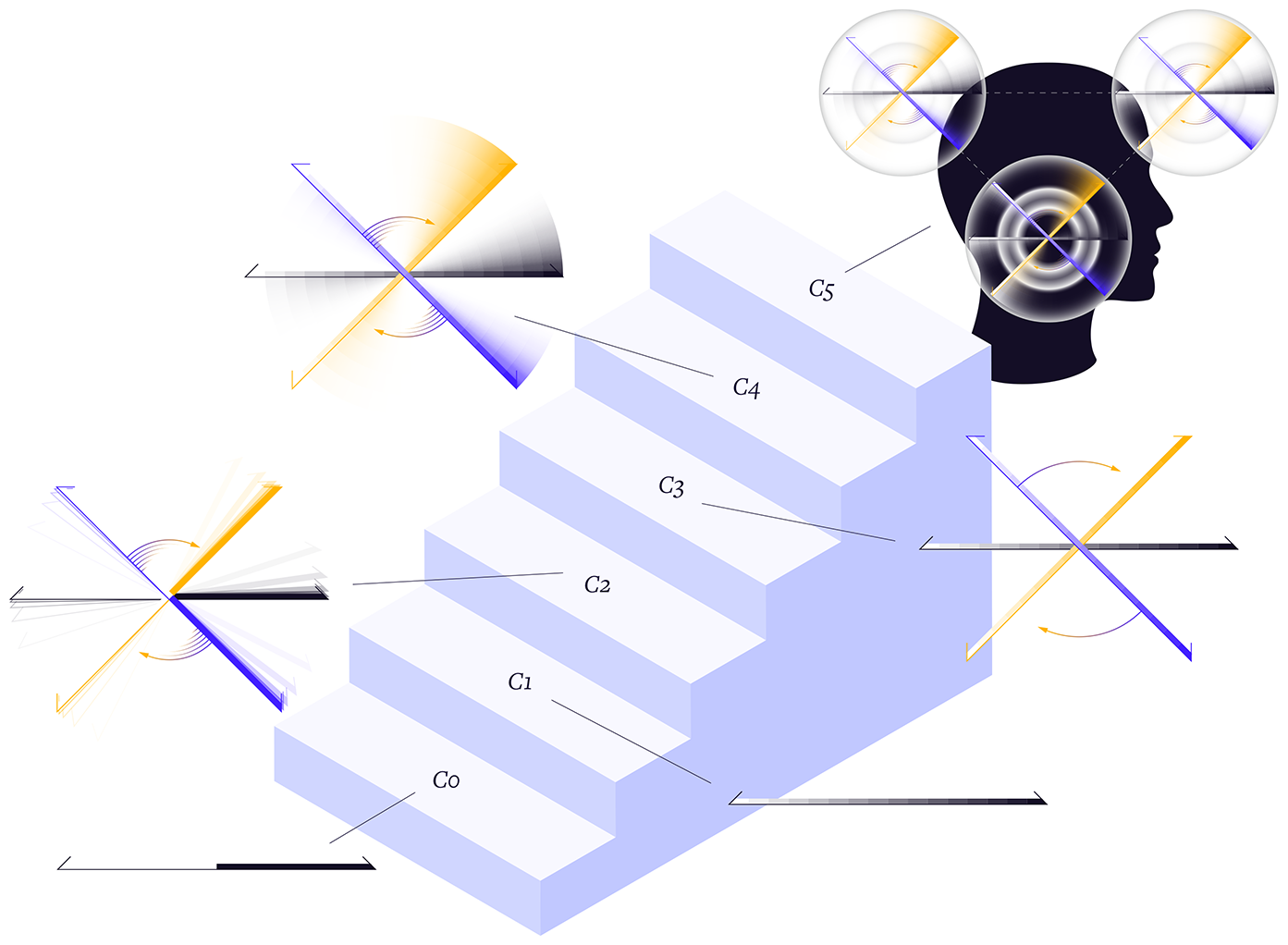
Viewed as a whole, C2M shows itself from below as a step model and from above as decision FORMs with different cognitive/emotional dispositions towards itself:
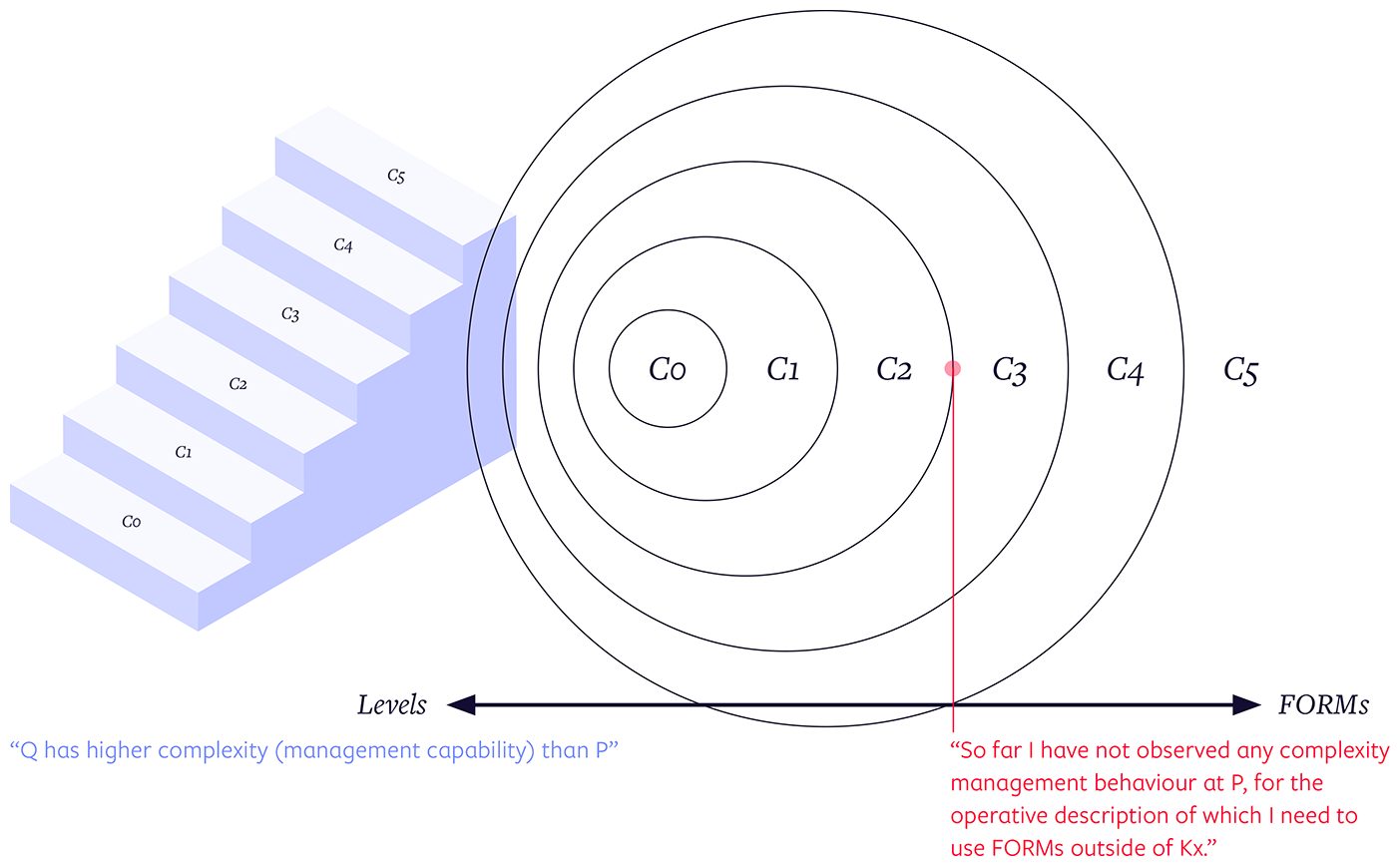
Only from C3 onwards can really be grasped integratively, before that it remains an idea without constructive experience in the factual. Over time, the user of the model not only learns that and how the C2M levels build on each other, but that each higher level can be experienced and lived more deeply the more detailed and comprehensive the lower levels are understood and worked out. Even for C0 applications can be found daily, and without understanding C0 no constructive communication can be conducted with people of this complexity management level or with ourselves when stress, distress, unhappiness, depression, burn-out can throw us back to C0.
I would like to conclude this introduction to our complexity management model by asking for prudent use of it. There is much to discuss here, much to consider. We can use it to ask ourselves more comprehensively how we can succeed in motivating ourselves and others to differentiate and dimension higher.
We need understanding not only for ourselves when we decide on older levels of complexity, but also for those who grow beyond them. Creating constructive, cooperative learning atmospheres seems to me one of the most important tasks of our time.
We will overcome the big crises of today if we help each other to increase our complexity management skills. Fortunately, of all things, the second challenge we face today, reality emulation, provides us with the opportunities, with new models and tools to do exactly that. And the many great people out there who have understood the importance of constructive cooperative measures give us the courage to use them.
Thank you.

